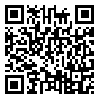Volume 4, Issue 3 And 4 (20 2009)
irje 2009, 4(3 And 4): 17-25 |
Back to browse issues page
Download citation:
BibTeX | RIS | EndNote | Medlars | ProCite | Reference Manager | RefWorks
Send citation to:



BibTeX | RIS | EndNote | Medlars | ProCite | Reference Manager | RefWorks
Send citation to:
Mirzazadeh A, Hajarizadeh B, Mesgarpour B, Golozar A, Holakouie Naieni K. Mapping of Cutaneous Leishmaniosis in Kerman City from 2002 to 2006 and its Environmental Risk Factors by Geographical Information System. irje 2009; 4 (3 and 4) :17-25
URL: http://irje.tums.ac.ir/article-1-129-en.html
URL: http://irje.tums.ac.ir/article-1-129-en.html
Abstract: (13649 Views)
Background & Objectives: Recent reports indicated an increase in cutaneous Leishmaniosis (CL) cases. We designed the study in the context of community assessment process to identify and address the major public health related issues by explore the risk map of CL and assessing the environmental risk factors in Kerman.
Methods: All the registered CL in the only referral center for CL from 2002 to 2006, localized on Kerman digital map. The level of data dissemination was townships. Based on data from the national statistics organization, we determined the population and calculated the incidence of CL of each township. Secondly, the highest endemic townships were observed deeply with a specific checklist to determine the environmental risk factors.
Results: 771 cases were included. All the high endemic areas were located in the east part of Kerman. The eastern township, Sarasiyab, with 123 (15.9%) cases was the most infected region. The highest endemic townships were Sarasiyab, Emam and Sarbaz with 54.9, 52.8 and 51.2 cases per 10,000, respectively. Some minor endemic areas such as Shahab, Abouzar and Shahzadeh Mohammad (South and central regions) were going to be disappeared while Shariati, Naseriyeh-Seyedi (North and North-East regions) were the new high-risk townships (P<0.01).
Conclusions: the east and central part of Kerman, were always the high endemic regions. Some other new high-risk areas were also detected. The most environmental factors were the bare lands between the houses, ground passages and the timeworn architecture on the buildings.
Methods: All the registered CL in the only referral center for CL from 2002 to 2006, localized on Kerman digital map. The level of data dissemination was townships. Based on data from the national statistics organization, we determined the population and calculated the incidence of CL of each township. Secondly, the highest endemic townships were observed deeply with a specific checklist to determine the environmental risk factors.
Results: 771 cases were included. All the high endemic areas were located in the east part of Kerman. The eastern township, Sarasiyab, with 123 (15.9%) cases was the most infected region. The highest endemic townships were Sarasiyab, Emam and Sarbaz with 54.9, 52.8 and 51.2 cases per 10,000, respectively. Some minor endemic areas such as Shahab, Abouzar and Shahzadeh Mohammad (South and central regions) were going to be disappeared while Shariati, Naseriyeh-Seyedi (North and North-East regions) were the new high-risk townships (P<0.01).
Conclusions: the east and central part of Kerman, were always the high endemic regions. Some other new high-risk areas were also detected. The most environmental factors were the bare lands between the houses, ground passages and the timeworn architecture on the buildings.
Type of Study: Research |
Subject:
General
Received: 2008/07/23 | Accepted: 2008/11/22 | Published: 2013/09/4
Received: 2008/07/23 | Accepted: 2008/11/22 | Published: 2013/09/4
| Rights and permissions | |
 |
This work is licensed under a Creative Commons Attribution-NonCommercial 4.0 International License. |





